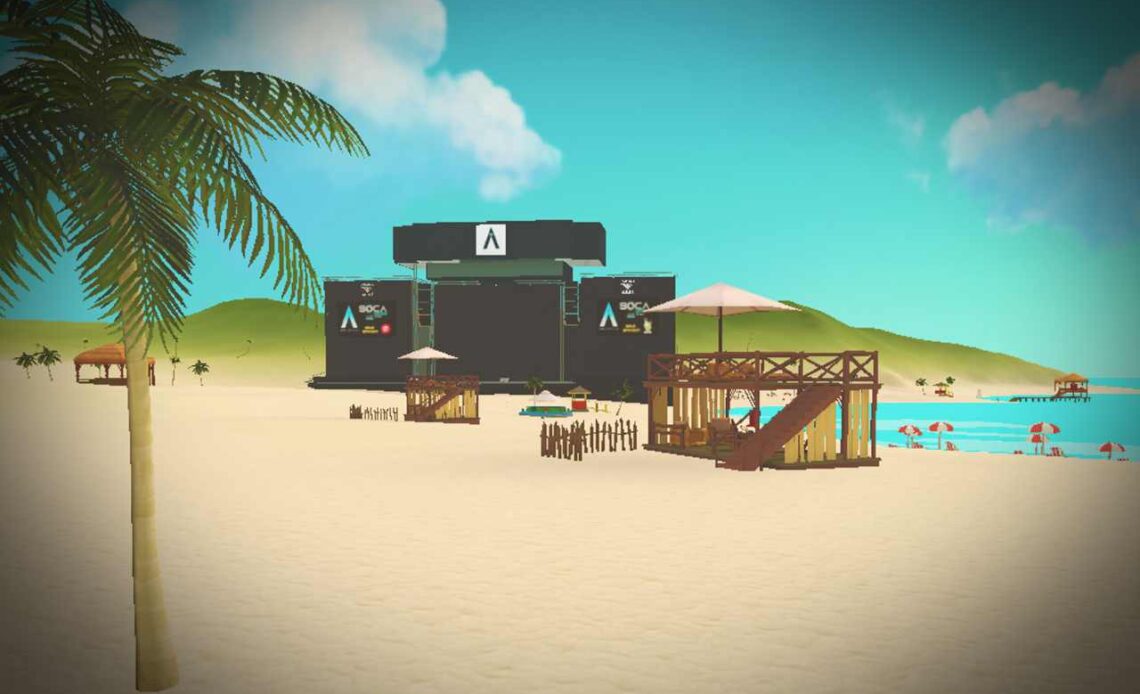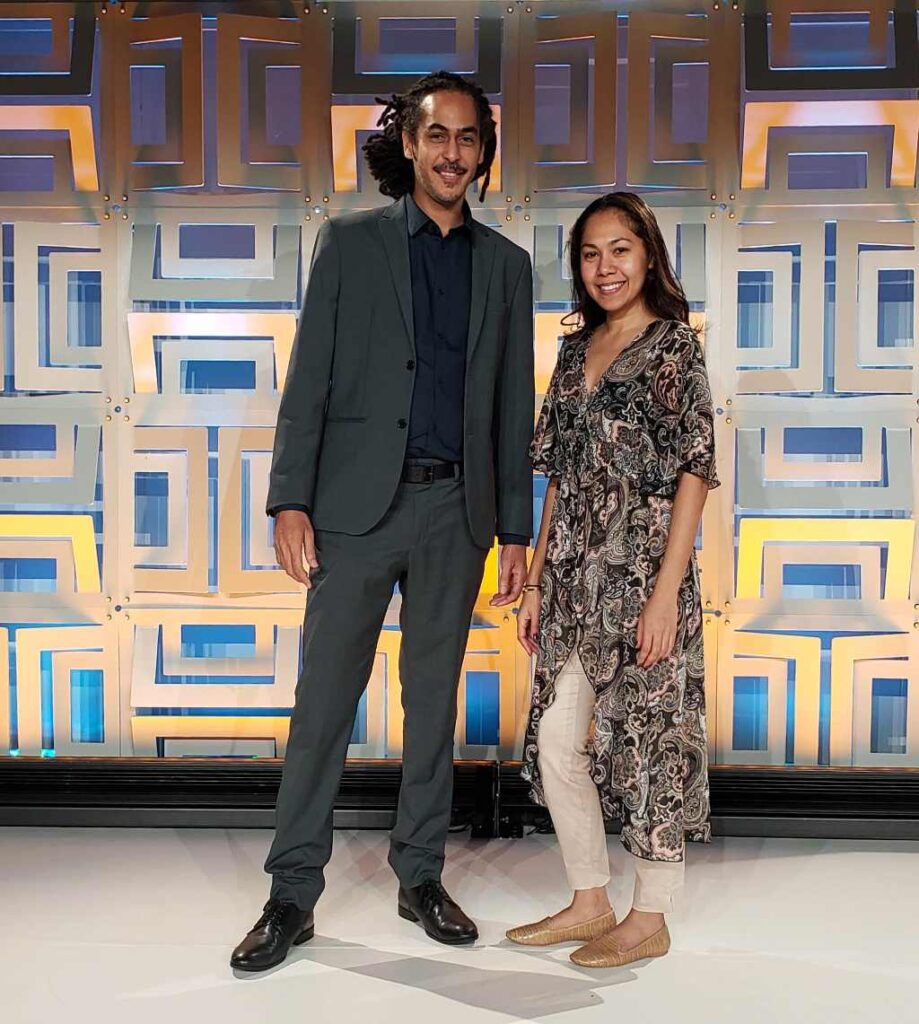
Above: Shawn De Frietas and marketing lead Deidre Lee Kin. Photo courtesy Dingole.
Originally published in Newsday’s Businessday on January 28, 2021.
Shawn De Frietas, co-founder and CEO of Dingole answered questions posed by Mark Lyndersay about the production of the virtual worlds of Antillea.
Antillea’s first project was an augmented reality museum commemorating the centenary of calypso music.
Panjam is their current flagship project, a VR concept that reimagines music learning for seniors using the steelpan.
The company created a virtual steelpan museum for Carifesta 2019 and has worked with Atlantic LNG, the Tobago Tourism Agency and the Central Bank among others.
Q: How did Dingole get involved with Antillea?
A: Our company specialises in immersive technologies. Technology used to create a virtual world for its users. Caesar’s army approached us with an idea to create an immersive virtual experience that was distinct from current offerings in the market like cloud-based peer-to-peer chat services and live video streaming services.
Q: Were there any specific or unusual technical requirements for working on the project?
A: A primary requirement for the project was to create the perfect Caribbean beach.
We did a few iterations of the design, but didn’t quite hit the nail on the head. Then we settled on a simple idea, let’s build Maracas beach in VR. Our very own Maracas beach is a great reference for a beautiful beach by any standard.
One of the most distinctive features about Maracas beach is the beautiful curve of the bay that forms a cradle for so much of our recreational activities, fun times and memories.
When you experience Antillea Island East, think of Maracas bay and it doesn’t take much more for your mind to connect the virtual with the real…it’s a great “ahhhaaa” moment.
Q: Were there any specific technical problems associated with the worldbuilding for the project?
A: It’s important not to forget that VR is a nascent technology, so developing in this space is often unsupported, especially when you want to move beyond the basic default templates.
There are always going to be tradeoffs when you are implementing a third party in your development strategy. The Altspace platform presented us with many opportunities but at the same time imposed many constraints to what we wanted to achieve.
We are a VR-first company, so we design primarily for the headset experience. With Antillea, we had to take into consideration desktop users which form the majority of our local and diaspora audience.
So a major tradeoff and challenge was to develop for both simultaneously and to make sure we could optimise performance and experience for both the desktop and headset users.
We are also introducing our local culture to the world as a social VR experience through the Altspace platform while introducing our local and Caribbean audiences to the platform.
For users unfamiliar with Caribbean culture we had to create a space where they could feel welcomed and encouraged to explore and learn more about what the world is about, and for those already familiar with Caribbean culture we had to make them feel at home by creating an authentic experience.

Q: Were there things you wanted to do that you might like to come back to add as the project evolves?
A: In the ideation phase we might come up with thousands of great ideas we would like to implement all at once to give our users the most immersive and engaging experience.
But each idea has to be seen through a lens of feasibility, can we technically build it? Then viability, is this financially worthwhile? And finally, desirability, will users want it ?
During this process many things get thrown out or put aside in our “nice to have lis”t. The “must haves” we form into build cycles and create a roadmap with the “nice to haves” for future development.
Engagement with real users also brings new insights and of course new feature requests to consider. We are designing with the users in mind, so any feedback from them is incorporated in the design process which makes our development iterative.
Q: How did you approach handling the differences in access between fully immersive VR headset, gaming mode on a PC and the 2D mode that’s apparently part of the capacity stepdown of the platform?
Altspace is one of a few popular social VR platforms that still offers support for desktop users. This was one of the main selling points for us choosing the Altspace platform.
We know a lot of our audience don’t have headsets, but we still want to offer them an immersive experience. We have to design for both experiences. Sometimes it’s a harmonious process, but often it is not.
For example, desktop users are often divided into Mac users and Windows users. Altspace support for Mac users has not been the same for Windows users, and many our users who have tried to access using a Mac have reported having issues.
These platform constraints are the most difficult to resolve because we cannot do that much and it is difficult to reconcile in the mind of the users where Altspace features fail and where (or if) Antillea falls short.
Q: What was the approach from definition of scope to completed 3D environment?
A: Much of the workflow for Antillea is similar to any video game/media production process.
The main difference is that we work with 3D environments which aren’t meant to be viewed efficiently on flat 2D screens. This means we work a lot in the VR environment which requires us to use the headset.
This adds an entirely new dimension to our design process. Our process is collaborative and allows us to work remotely within the same virtual space. It may seem quite strange to an onlooker, and we have been asked many times what we are doing with those things on our faces but for us it’s quite normal.

